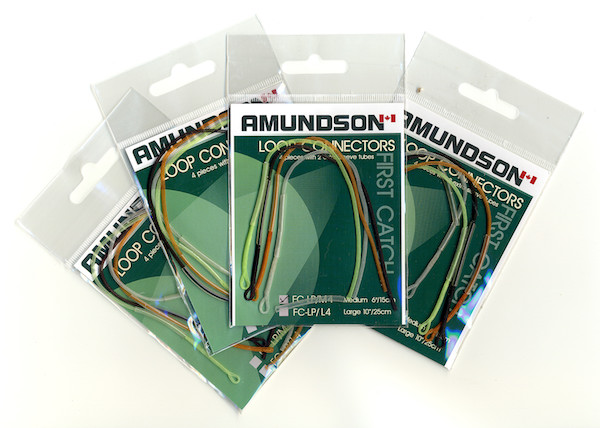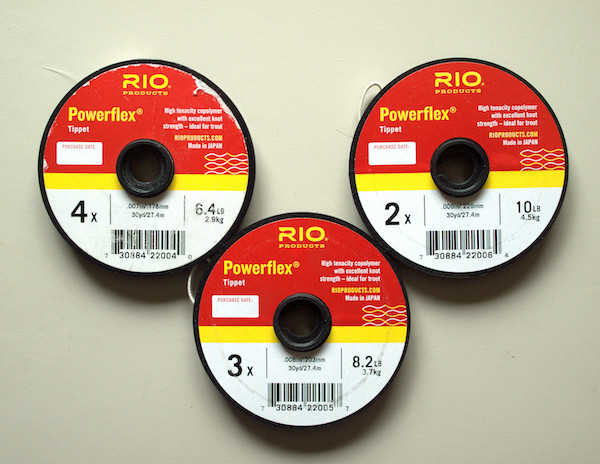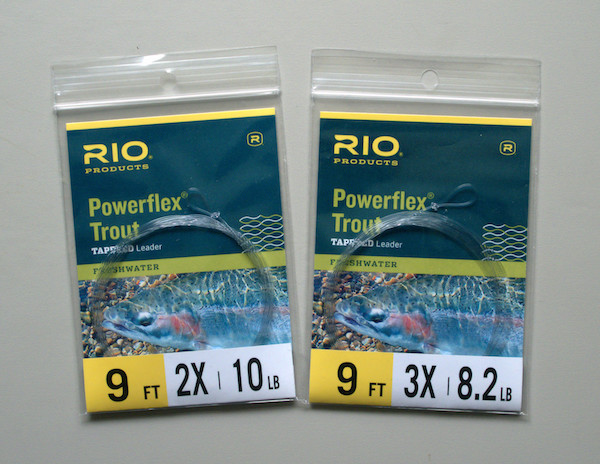
All fly fishers have to use a leader. It’s just a fact of life. Sometimes you don’t have to use tippet, but for the most part you must use that too. The problem is that lots of fly fishers don’t really have a good grasp of how to match the leader and tippet to the fly and how to put them together so that they work in harmony.
Leaders are a means to an end. They are meant to reduce the thickness of your line from the thick fly line down to the thin tip—at least thin enough to tie on a fly. Leaders are also designed so that when you match the tip diameter with the fly, the cast will roll over smoothly, deliver the fly to the water cleanly instead of collapsing in a pile of monofilament, and allow the fly to move freely on the water without jerking around because the leader tip is too stiff.
To accomplish this feat, all leader and tippet material is classified by diameter, not strength (pounds test). This is because line strength varies between manufacturers for the same diameter of monofilament, but diameter does not. Most packages or spools of leader and tippet material are labeled showing their diameters in decimals of an inch, and “X” designation. The two are linked and always remain the same. For example: a leader that has a tip diameter of .008 inches is designated 3X, regardless of the manufacturer, and a leader of .006 inches diameter is 5X … do you see a trend here yet? There is a simple rule (called the rule of 11) to remember when trying to figure out what X designation a piece of monofilament is, or what diameter it is, if the package is only labelled with one of the two. The rule goes like this: the last digit in the diameter plus the X designation always equals 11. Thus, 2X leader is always .009 inches in diameter, and so on.
There is another simple rule you should know and use, called the rule of thirds. To match the tip diameter of your leader or tippet to the fly, simply divide the fly hook size by 3 and round to the nearest number. This will give you a whole number. That number is the “X” designation of the monofilament that you should be using to attach that fly to your line. By doing this, you end up using a leader that is stiff enough to roll the fly over during casting and soft enough to allow the fly to move naturally in or on the water.
If we attach our fly directly to the leader, though, we have a problem. Since the leader is tapered, as we cut off and tie on new flies the leader gets thicker. Pretty soon it becomes too thick, and we must either replace the leader, which can get expensive, or we attach tippet material. Tippet material is just level monofilament line of various diameters. Each spool is labeled with the diameter in inches, the X designation, or both. The rule of 11 and the rule of thirds applies to tippets as well as leaders.
All these rules are fine and dandy, but not much is going to happen if you can’t attach the pieces together securely. While there are a great many knots out there, the trick to working with them is to pick a few simple ones that work well. My basic knots for fly fishing are as follows: any time I tie anything to my fly line I use a nail knot, any time I tie monofilament to monofilament I use a surgeon’s knot, and I attach flies to monofilament using an improved clinch knot. If you prefer an easy on/off method of attaching and detaching your leader from your fly line, then use a leader loop or whipped loop. Tie a surgeon’s loop in the end of your leader, and you can then connect the leader and the fly line loop to loop. Try to keep the loops fairly small when tying them; this will help avoid picking up algae and weed when in the water.
Many of you may disagree with me on my selection of the surgeon’s knot for connecting monofilament to monofilament. A lot of people prefer the blood knot. The blood knot is a great knot when joining pieces that are similar in diameter, although it often seems like you need four hands to tie it. However, in many cases fly-fishers must attach pieces of monofilament that are seriously different in diameter. If a blood knot is used in these cases, it will slip. This is because it is impossible for the thick line to cinch down on the thinner piece in the centre of the knot. The surgeon’s knot cinches tight around both pieces because of the way the two pieces intertwine when tied.
Leaders and tippets are extremely important parts of a balanced fly fishing system. Keep the rules of 11 and thirds in mind every time you put leaders, tippets, and flies together. These rules will never fail you. Applying them when tying your system together will improve your casting and your fishing success.
One Comment
Leave A Comment
Visit the Store
$34.99
$34.99
Featured Catch

Joel Unickow halibut (Photo: Rob Frawley Lucky Strike Sportfishing Tofino)










What has made my fly-tippet-leader connection a lot easier is to use a small tippet ring at the end of the leader tied with a clinch knot, and then a clinch knot connecting my tippet to the tippet ring. I never use up the leader, and very easy to tie on a new section of tippet.